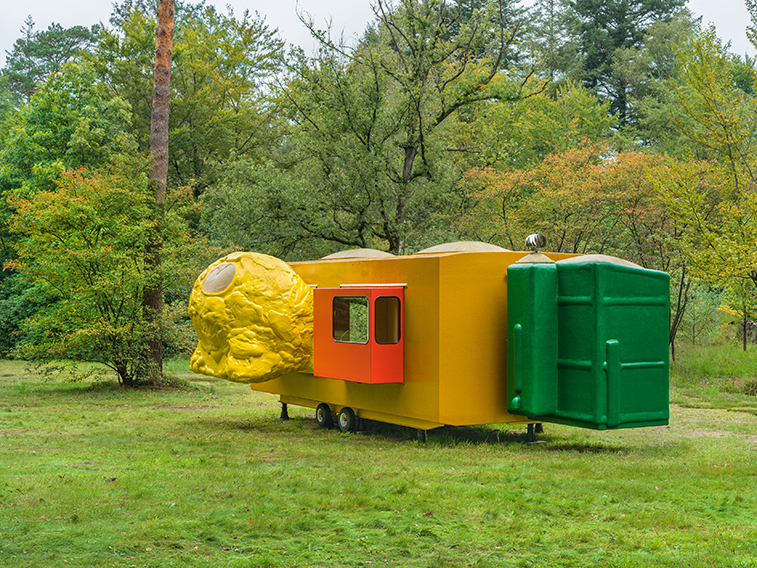
Background
This large sculpture is made of fibreglass-reinforced polyester, polyurethane foam, plywood, wood, glass, rubber and metal. It is a small house with various colourful parts. As the name suggests, the work was made especially for the Kröller-Müller Museum. It consists of a central ‘master unit’, with a study, a bedroom, a kitchen and a bathroom attached. The work has stood in various locations in the sculpture garden; it has occupied its current location since 2011.
Art house
Atelier van Lieshout, founded by Joep van Lieshout in 1995, operates at the intersection of visual art, architecture and design. Mobile Home for Kröller-Müller shows Van Lieshout’s interest in the relationship between art and life. According to Joep van Lieshout, Mobile Home could actually be suitable to live in. He would like the house to be in good condition and appear usable, but also believes that signs of aging, such as discolouration, may be visible. So the work may look as if it has been lived in, but as if it has been maintained with love and care.
Conservation
30 years after its installation, this was no longer the case; parts of the work were in very poor condition, despite regular maintenance in recent years. Due to constant exposure to the elements and the complex materials used by the artist, damage and deterioration was visible in several places. The polyester had degraded. There was flaking, cracking, discolouration and wear and tear. The wooden structure had also become damp, which caused weakening and rotting areas. This resulted in the subsidence of several units.
Extensive conservation work was urgently required to repair the cracks and flaking. Above all, the hard-to-reach wooden construction needed to be improved.

Realisation
By 2024, all the damage was assessed in detail. Discussions were held with Atelier Van Lieshout to determine the meaningful elements of the work. The possibility of a phased treatment per unit was also explored. The conservation work was ultimately carried out in the summer of 2025, by and in collaboration with Atelier Van Lieshout. The work focused on both the construction and the aesthetic finish. The sculpture is structurally stable again, the wood has been partially replaced, water no longer seeps in, and the colours look spectacular once more. In September, the artwork was returned to the sculpture garden.
The conservation of Mobile Home for Kröller-Müller was made possible in part by Dirkzwager and the VriendenLoterij.
